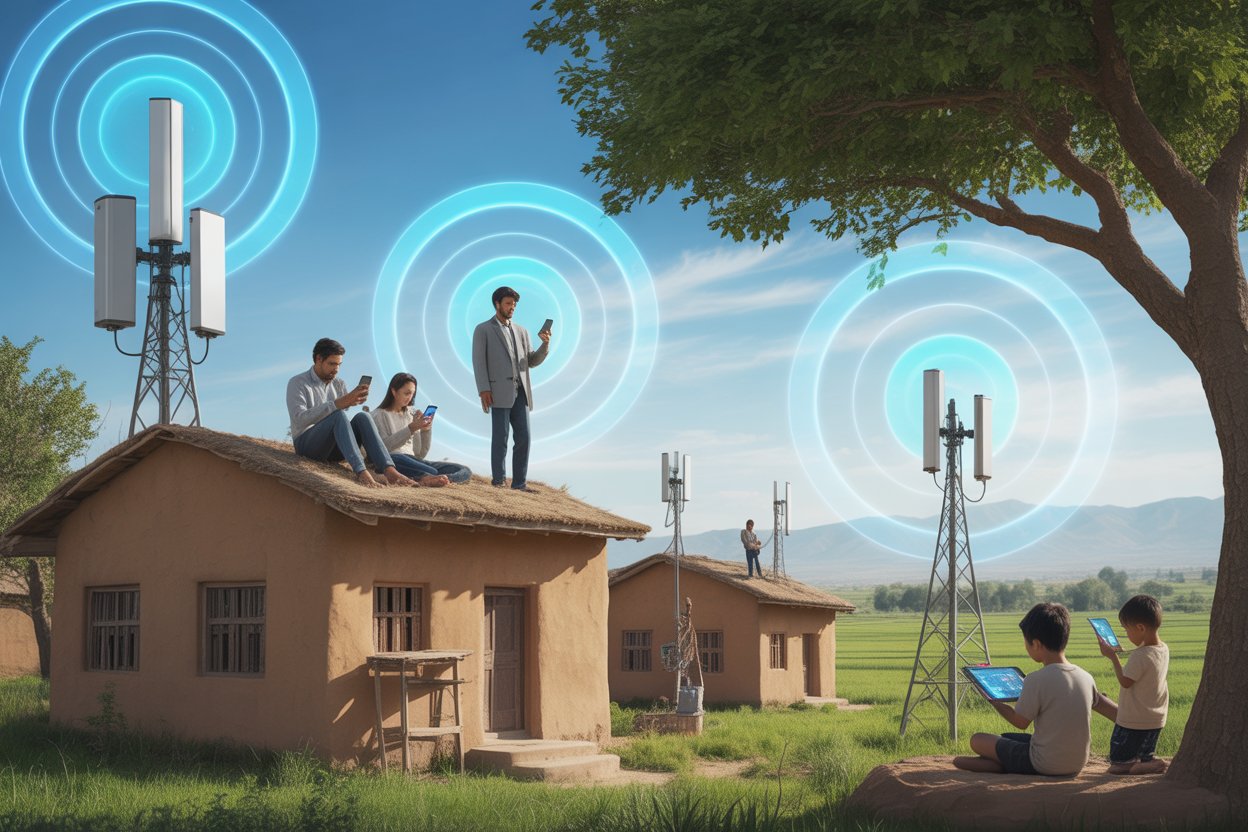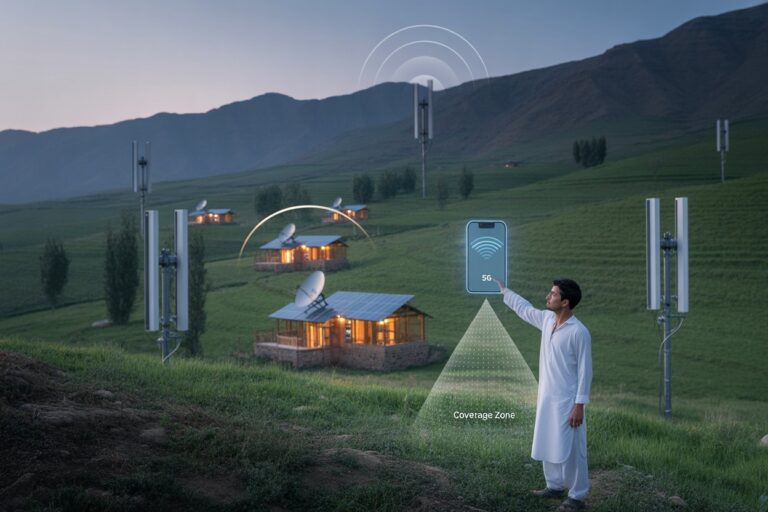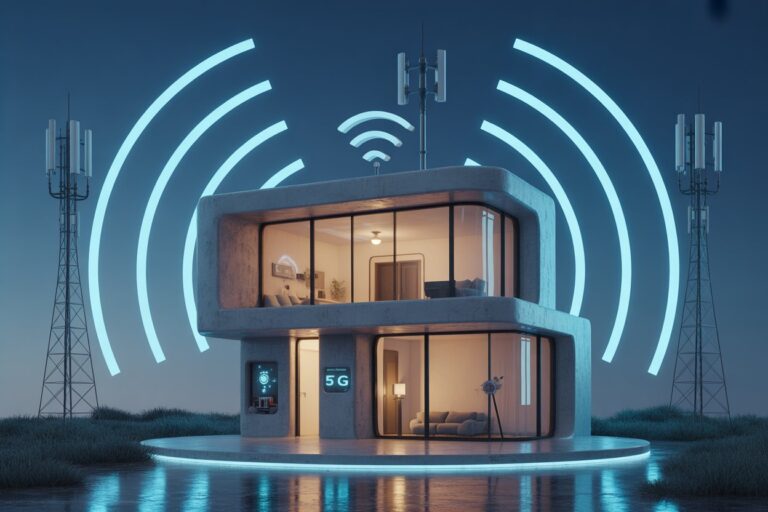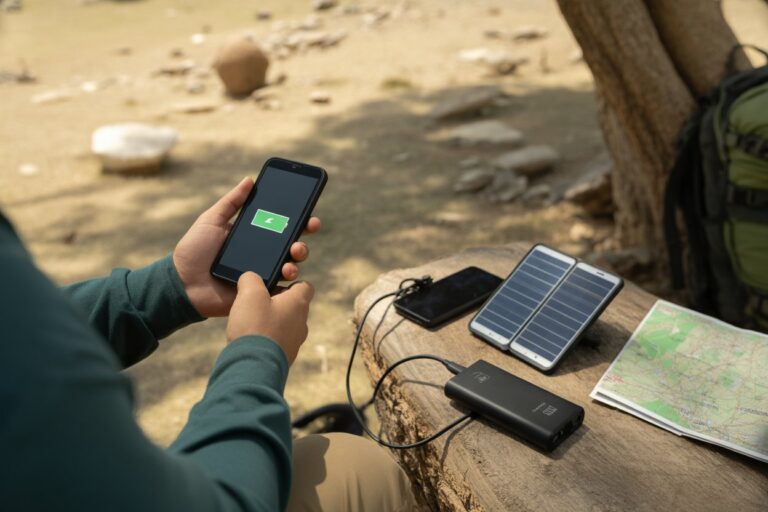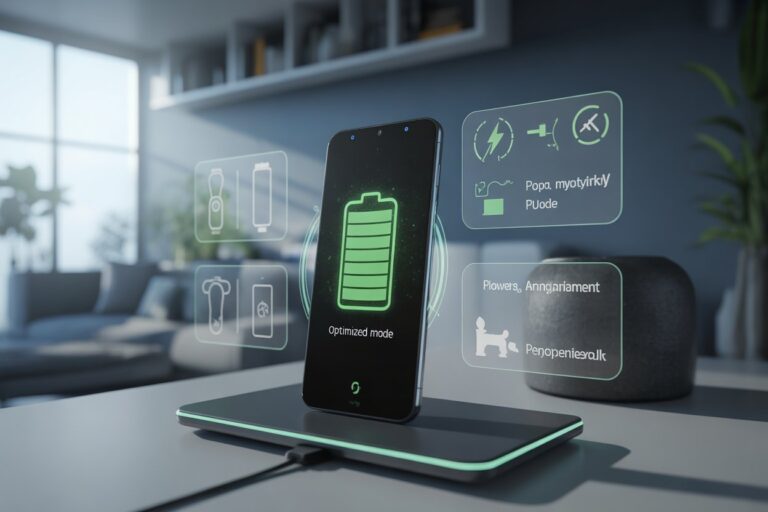Best Way to Boost 4G Signal in Rural Pakistan 2025
In rural Pakistan, reliable 4G connectivity remains challenging. Whether you’re working remotely, staying in touch with family, or managing online education, having a stable mobile data signal is essential.
Here’s a practical guide combining modern strategies and local know-how to effectively boost your 4G signal in rural areas.
Understanding the Rural 4G Signal Landscape in 2025
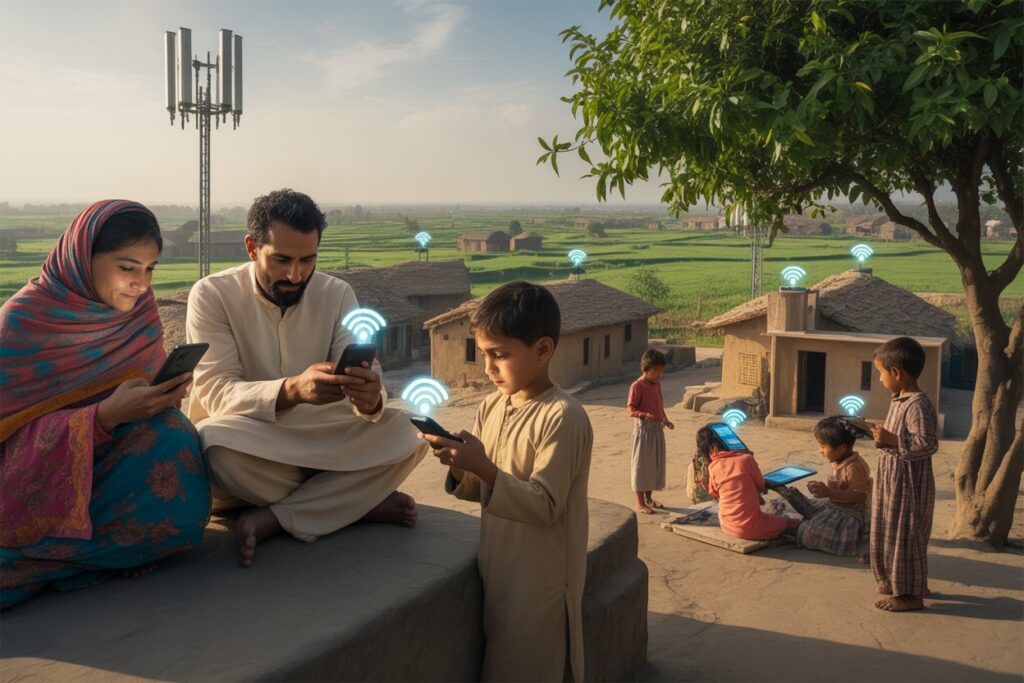
Challenges Unique to Rural Pakistan
- Fewer cell towers mean longer distances from your device to the nearest tower.
- Terrain interference: Mountains, trees, and small hills often block signals.
- Infrastructure gaps: Many homes use thick concrete or clay walls that block waves.
- Network congestion: Shared reliance on limited towers causes slowdowns.
Why 4G Still Matters
Even with the push toward 5G, 4G remains the backbone of rural connectivity in Pakistan. With affordable data plans and wide compatibility, harnessing its full potential is key.
Top Ways to Improve 4G Signal in Rural Pakistan
1. Locate the Nearest Tower
Use apps like OpenSignal, CellMapper, or Network Cell Info Lite to track tower positions and signal strength trends. Position your phone strategically—outside or near a window—where coverage is strongest.
2. Enable 4G-only Mode
On Android phones:
pgsql
CopyEdit
Settings > Mobile Network > Preferred Network Type > Set to “4G/3G/2G (not auto)” or “4G only”
This prevents constant switching and helps lock into the strongest 4G signal.
3. Use Wi-Fi Calling
Major carriers (Jazz, Zong, Ufone, Telenor) now support Wi‑Fi calling. If you have a home internet connection, this can bypass weak cell signals entirely.
4. Install a PTA-approved Signal Booster
A reliable PTA-approved 4G booster (e.g., HiBoost, EMBOOST, TP-Link models) can amplify outdoor signals and distribute them indoors. Make sure it supports local LTE bands and is officially certified.
DIY and Low-Cost Signal Boosting Methods
5. Build a DIY Reflector
Wrap aluminum foil around a cardboard cutout and place it behind your phone’s antenna—this passive reflector can help direct and enhance reception, especially when used outdoors.
6. Mount Phone or Booster on a Balcony or Roof
Strength increases with height. A phone or booster mounted 10–15 feet up can drastically improve line-of-sight reception. Use a small tripod or pole for elevation.
7. Trim Obstructing Vegetation
Cut low-hanging tree branches or dense shrubs near your home. Even minor clearance helps signals reach your windows and walls more clearly.
Hardware Upgrades for Better Connectivity
8. External LTE Antennas and Directional Masts
Connect a 7–10 dBi directional LTE antenna to your booster or router. Point it toward the tower, and mount it on a mast to significantly improve signal strength indoors.
9. Use a 4G LTE Router with External Antenna Ports
Pair a more powerful 4G LTE router (e.g., Huawei or TP-Link) with external antenna support—you’ll enjoy better indoor coverage compared to typical mobile hotpots.
10. Try a Portable MiFi Device
Some MiFi units offer enhanced signal sensitivity and better stability than smartphone hotspots—ideal if you frequently move between rooms or outside.
Software and Device Settings
11. Monitor and Manage Background Data
Streaming, syncing, and auto-updates can hamper connection speed. Use Android’s Data Saver mode or restrict background data in Settings > Apps & Notifications.
12. Keep Firmware and Android Updated
Updates often include modem and signal tweaks. Regularly check Settings > System > Software Update, and updating booster/router firmware helps too.
13. Clear Your Device’s Network Cache
Reset network settings to refresh mobile connections:
pgsql
CopyEdit
Settings > System > Reset Options > Reset Wi-Fi, mobile & Bluetooth
Local Tips for Rural Pakistani Users
14. Choose the Right Carrier
Coverage varies by region—Jazz and Zong often offer stronger uplink and downlink in rural Sindh, while Telenor and Ufone may perform better in Punjab. Use coverage apps and neighbor insights to decide.
15. Subscribe to 4G-Optimized Bundles
Carriers offer special 4G data bundles—Jazz’s “Internet Plus,” Zong’s “4G Bolt,” and Telenor’s “Internet Max.” These often include better QoS for LTE users.
16. Combine Internet and Signal Strategies
If you already have a landline DSL or satellite internet, enable Wi-Fi calling and balance data usage between Wi-Fi and cellular to maintain speed and stability.
Maintenance and Troubleshooting for Long-Term Use
17. Regularly Inspect Booster and Antenna
Check cables, adapters, and connectors for corrosion or damage—especially after storms. Confirm the booster’s LED indicates proper function.
18. Monitor Weather Impact
Rain and wind can reduce 4G signal. Check weather telemetry and adjust antenna accordingly for stable reception.
19. Document Signal Gains
Track signal data before and after improvements using SMS codes or network apps—even small gains matter.
Internal Link Suggestions
- Top Battery-Saving Tips for Android Users
- How to Fix App Lag and Performance Drops on Android
- How to Boost Mobile Signal in Rural Areas
FAQs (People Also Ask)
Q1: What is the best way to boost 4G signal in rural Pakistan?
Use a PTA-approved 4G booster with an external directional antenna, mounted on a balcony or roof—paired with a good data plan.
Q2: Can Wi-Fi calling replace 4G signal issues in rural areas?
Yes—if you have stable home internet. It routes calls over Wi-Fi instead of cellular, improving reliability.
Q3: Do DIY reflectors actually work for signal boosting?
They help marginally by directing stronger signal toward the device, especially when outdoor signal is weak.
Conclusion
Improving 4G signal quality in rural Pakistan in 2025 combines smart tech choices with practical local action. The most effective strategy?
Use a PTA-approved signal booster with an outdoor directional antenna, elevate the system on your property, and complement it with proper firmware management, carrier bundles, and Wi-Fi calling.
Whether you’re working remotely, studying, or connecting with loved ones, these methods ensure reliable, consistent connectivity.
